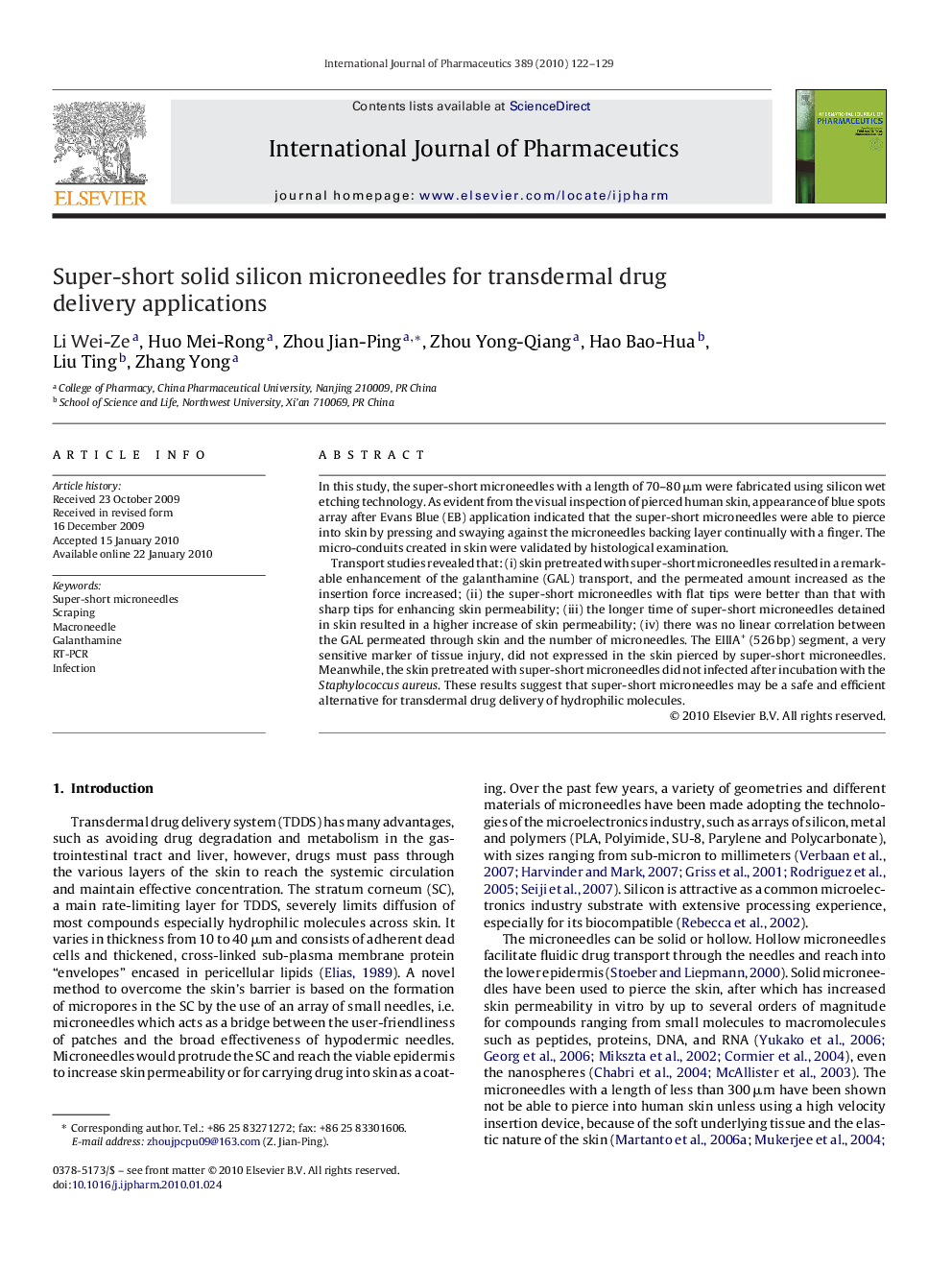| Article ID | Journal | Published Year | Pages | File Type |
|---|---|---|---|---|
| 2504216 | International Journal of Pharmaceutics | 2010 | 8 Pages |
In this study, the super-short microneedles with a length of 70–80 μm were fabricated using silicon wet etching technology. As evident from the visual inspection of pierced human skin, appearance of blue spots array after Evans Blue (EB) application indicated that the super-short microneedles were able to pierce into skin by pressing and swaying against the microneedles backing layer continually with a finger. The micro-conduits created in skin were validated by histological examination.Transport studies revealed that: (i) skin pretreated with super-short microneedles resulted in a remarkable enhancement of the galanthamine (GAL) transport, and the permeated amount increased as the insertion force increased; (ii) the super-short microneedles with flat tips were better than that with sharp tips for enhancing skin permeability; (iii) the longer time of super-short microneedles detained in skin resulted in a higher increase of skin permeability; (iv) there was no linear correlation between the GAL permeated through skin and the number of microneedles. The EIIIA+ (526 bp) segment, a very sensitive marker of tissue injury, did not expressed in the skin pierced by super-short microneedles. Meanwhile, the skin pretreated with super-short microneedles did not infected after incubation with the Staphylococcus aureus. These results suggest that super-short microneedles may be a safe and efficient alternative for transdermal drug delivery of hydrophilic molecules.
